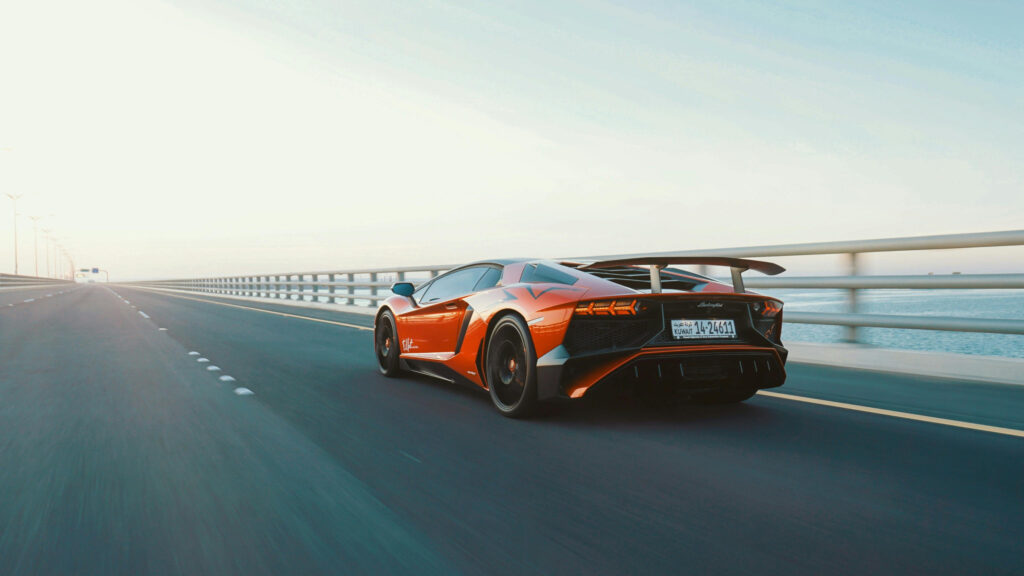Liverpool and Portugal are mourning the tragic loss of Diogo Jota, who died in a car crash in Spain on July 3, 2025. The 28-year-old forward’s untimely death has left a void in the football community, as tributes continue to pour in from fans and colleagues alike. As the investigation unfolds, questions have arisen about the circumstances of the fatal accident, particularly concerning the high-performance vehicle he was driving.
Jota and his younger brother, André Silva, were traveling from Porto to Santander when their Lamborghini crashed on the A-52 motorway near Zamora, in northwestern Spain. According to local reports, the vehicle suffered a tire blowout while overtaking another car, subsequently veering off the road and bursting into flames. Both Jota and Silva tragically died at the scene.
The Lamborghini and Its Risks
Multiple credible sources have confirmed that Diogo Jota was driving a Lamborghini at the time of the accident. Although the exact model has not been officially disclosed, footballers often favor high-performance models such as the Lamborghini Huracán or Aventador, both known for their extreme speed and acceleration. These vehicles, while symbols of success, require a high level of control and awareness, particularly at high speeds.
The risk of tire blowouts, although rare, is heightened in such vehicles when traveling long distances or on uneven road surfaces. Tragically, this mechanical failure proved fatal in Jota’s case. This incident highlights the inherent risks associated with driving high-performance cars, especially under less-than-ideal conditions.
Medical Advice and the Tragic Journey
Jota’s decision to travel by road was influenced by medical advice to avoid flying after undergoing minor lung surgery. The journey from Porto to Santander was intended to allow him to board a ferry back to the UK, minimizing pressure on his respiratory system. What was meant to be a safer route turned into a deadly one, adding a tragic layer to the story.
This aspect of the incident raises broader questions about player welfare and how clubs manage off-season or post-injury travel for their athletes. The tragic outcome of Jota’s journey underscores the need for more comprehensive travel safety protocols for athletes recovering from medical procedures.
The Culture of Luxury Cars Among Athletes
Professional footballers often invest in luxury cars, including supercars like Lamborghinis and Ferraris. While these vehicles are emblematic of their success, they also pose serious safety risks, such as low clearance, high speed, and limited visibility. These risks are exacerbated when driven long distances or at high speeds.
There have been previous high-profile accidents involving athletes and luxury vehicles, prompting some experts to call for better driver education and stricter guidance for young players regarding road safety. In Jota’s case, a perfect storm of medical recovery, road travel, and supercar mechanics culminated in tragedy.
“The move represents a significant loss to the football world, as Jota was a key figure in Liverpool’s recent Premier League title win, as well as their FA Cup and EFL Cup triumphs.”
Tributes and Legacy
Liverpool Football Club issued a heartfelt statement, describing Jota as a model professional and a beloved teammate. They also posted a video tribute on social media for their ‘lad from Portugal.’ Cristiano Ronaldo and former manager Jürgen Klopp also paid tribute, highlighting the profound impact Jota had on those around him.
Meanwhile, fans gathered outside Anfield with flowers and scarves, as reported by the Daily Mail. Jota’s legacy includes 49 caps for Portugal and two UEFA Nations League titles, the most recent in 2025. His tragic accident has left an enormous void in football, but it also raises important questions about safety in the sport.
As the investigation continues, the spotlight remains on the Lamborghini he was driving and the risks associated with such high-performance travel. Diogo Jota, one of football’s brightest talents, is gone too soon, but the questions raised may prompt overdue conversations about safety in the game.
